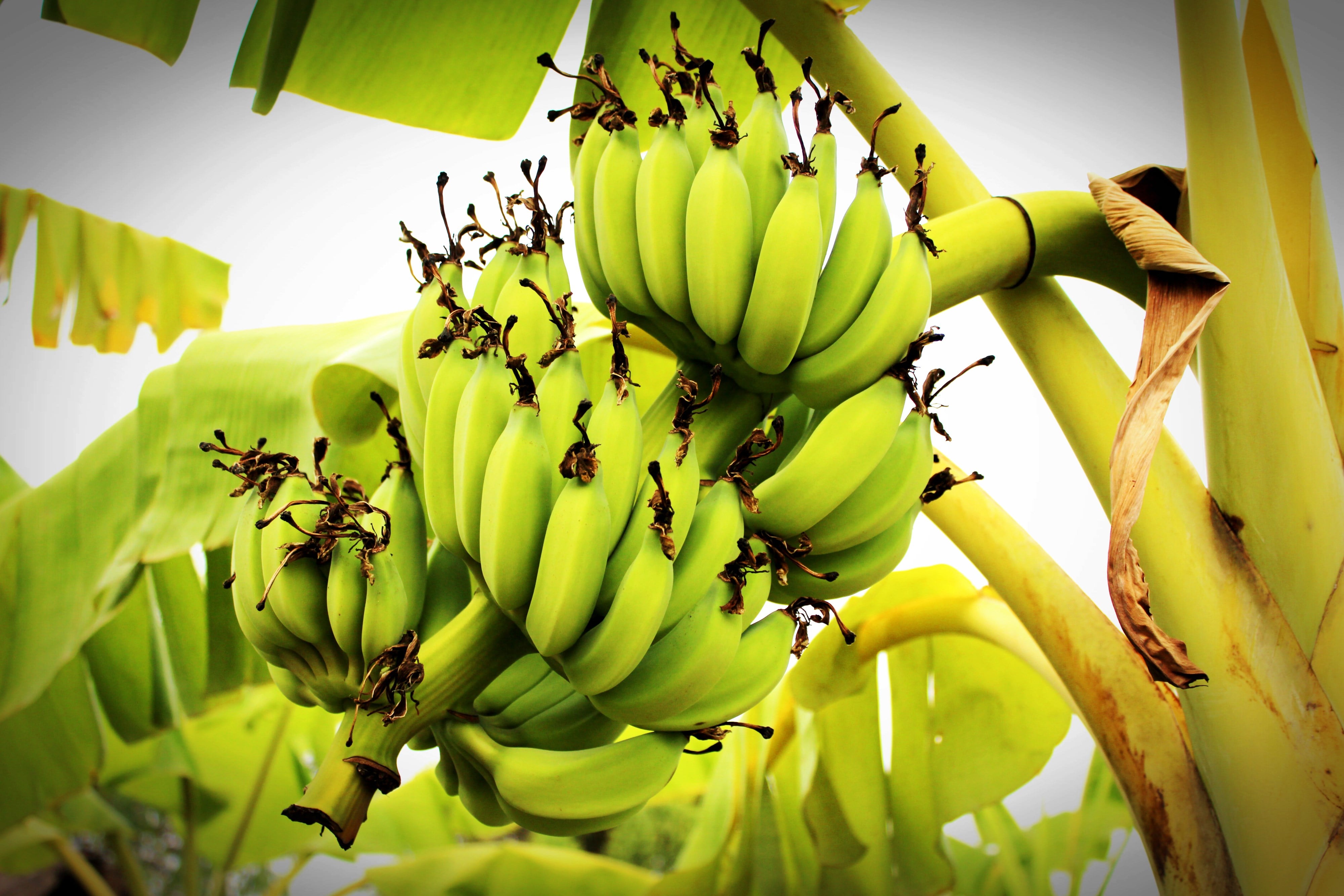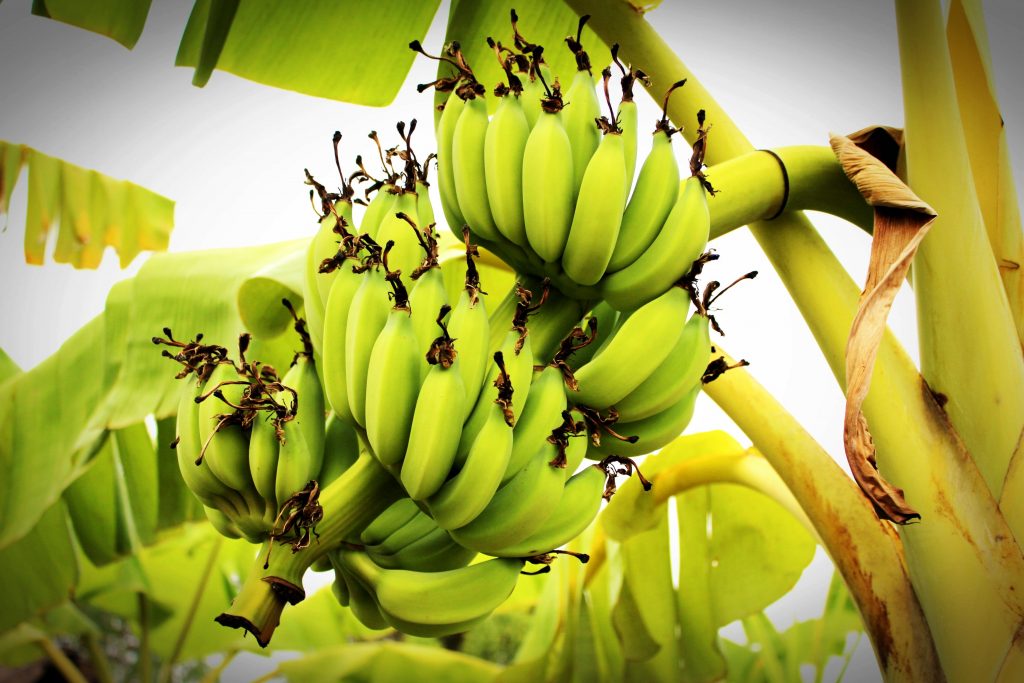
 icon0.com at Pexels[/caption] In the Philippines, the main target of bugtok are the cardaba and saba, the varieties best used in making quality chips, flour and ketchup. When a bugtok outbreak hit one of the the country's top suppliers of banana, particularly the municipality of Cabadbaran, Agusan del Norte, the over-all production of banana tremendously declined. This alarming incidence prompted the officials and researchers of the Caraga Regional Integrated Agricultural Research Center in Region XIII to conduct a technology demonstration project in an effort to teach banana farmers the most effective way to combat this "stubborn" disease. Knowing the symptoms According to Ms. Florites S. Janoplo, the lead researcher of the study, understanding the nature and causes of the disease is one of the most important steps in designing an effective management and control strategy. Fruit experts who worked with this project that lasted for almost three years (1998-2001), said that the most evident symptom of bugtok is the red and black discoloration running from the core towards the whole pulp of the fruit. The fruit pedicel or stem shows yellowish brown discoloration. Plants infected with bugtok do not wilt or die, but since the disease is restricted to the fruits, these become hard even when ripe or cooked. Experts accounted this condition to the entry of pathogens inside the fruit, which later multiply and invade the fruit's vascular system. The bracts (modified leaves) of the male bud (puso) do not detach or fall off from the stem even if they are already dried. Banana plants highly infested with bugtok fail to produce healthy and marketable fruits, thus, cutting the income of farmers down to zero level. Strategies developed and undertaken Considering that technology best works if the user of it is directly involved, researchers of the study, with the aid of extension personnel, trained a total of 12 farmer-cooperators to work on a 1.0 ha techno-demo farm. The farmers underwent a series of seminars on proper collection of soil samples from their fields. They were also provided with necessary farm inputs like organic and inorganic fertilizers and empty sacks for wrapping the male buds. The farmer-cooperators received a total of 1,275 banana clumps, which were planted and strictly monitored in the experimental site. Control measures employed The study determined which among the approved cultural management practices can effectively eradicate the bugtok infestation. Some of the cultural farm practices they employed are desuckering, steam and mat sanitation, leaf prunning, and bagging and debudding. Desuckering is usually done to maintain the health and vigor of the plants. This is also practiced to prevent competition for nutrient and water and to avoid overcrowding. Extension personnel advised the farmer-cooperators that the ideal number of suckers for a banana plant should not exceed three. Since weeds serve as refuge and breeding place for insect pests and diseases, stem and mat sanitation was done at least twice a month. Banana farmers used to strip the dry portion of the leaf sheaths, cut them into small pieces, and file along the middle row of the plants' rows and base to prevent the growth of weeds. Likewise, banana leaves were regularly pruned to eliminate the inoculum source of the disease. Leaves with 50% dryness were trimmed and burned right away. On the other hand, bagging and debudding involved wrapping the male bud or "heart" with plastic bag, cement bag, sack, or any material with an open end. The farmer-cooperators were advised to remove the bag 14-15 days after shooting. The gratifying results Of all the cultural methods employed in this project, the researchers concluded that bagging is the most effective technique that completely eradicated bugtok. They explained that bags serve as protective covering against insects that may carry the bacterium responsible for bugtok. They also observed that banana plants are most susceptible to bugtok during their flowering stage. In three years, the project yielded positive results, as farmer-cooperators were able to harvest a total of 2, 909 bugtok-free bunches. Farmers who strictly followed the bagging technique and other cultural management practices in the techno-demo site had augmented their income, ranging from P8, 400.00 to P14, 810 /ha per harvesting season --------------------- For more information, please call Ms. Florites S. Janoplo, Caraga Regional Integrated Agricultural Research Center, Trento, Agusan del Sur at Tel. No. (085) 225-2691.) by Mary Charlotte O. Fresco, BAR Chronicle, May 2002 Issue (Vol. 3 No. 9-10)
icon0.com at Pexels[/caption] In the Philippines, the main target of bugtok are the cardaba and saba, the varieties best used in making quality chips, flour and ketchup. When a bugtok outbreak hit one of the the country's top suppliers of banana, particularly the municipality of Cabadbaran, Agusan del Norte, the over-all production of banana tremendously declined. This alarming incidence prompted the officials and researchers of the Caraga Regional Integrated Agricultural Research Center in Region XIII to conduct a technology demonstration project in an effort to teach banana farmers the most effective way to combat this "stubborn" disease. Knowing the symptoms According to Ms. Florites S. Janoplo, the lead researcher of the study, understanding the nature and causes of the disease is one of the most important steps in designing an effective management and control strategy. Fruit experts who worked with this project that lasted for almost three years (1998-2001), said that the most evident symptom of bugtok is the red and black discoloration running from the core towards the whole pulp of the fruit. The fruit pedicel or stem shows yellowish brown discoloration. Plants infected with bugtok do not wilt or die, but since the disease is restricted to the fruits, these become hard even when ripe or cooked. Experts accounted this condition to the entry of pathogens inside the fruit, which later multiply and invade the fruit's vascular system. The bracts (modified leaves) of the male bud (puso) do not detach or fall off from the stem even if they are already dried. Banana plants highly infested with bugtok fail to produce healthy and marketable fruits, thus, cutting the income of farmers down to zero level. Strategies developed and undertaken Considering that technology best works if the user of it is directly involved, researchers of the study, with the aid of extension personnel, trained a total of 12 farmer-cooperators to work on a 1.0 ha techno-demo farm. The farmers underwent a series of seminars on proper collection of soil samples from their fields. They were also provided with necessary farm inputs like organic and inorganic fertilizers and empty sacks for wrapping the male buds. The farmer-cooperators received a total of 1,275 banana clumps, which were planted and strictly monitored in the experimental site. Control measures employed The study determined which among the approved cultural management practices can effectively eradicate the bugtok infestation. Some of the cultural farm practices they employed are desuckering, steam and mat sanitation, leaf prunning, and bagging and debudding. Desuckering is usually done to maintain the health and vigor of the plants. This is also practiced to prevent competition for nutrient and water and to avoid overcrowding. Extension personnel advised the farmer-cooperators that the ideal number of suckers for a banana plant should not exceed three. Since weeds serve as refuge and breeding place for insect pests and diseases, stem and mat sanitation was done at least twice a month. Banana farmers used to strip the dry portion of the leaf sheaths, cut them into small pieces, and file along the middle row of the plants' rows and base to prevent the growth of weeds. Likewise, banana leaves were regularly pruned to eliminate the inoculum source of the disease. Leaves with 50% dryness were trimmed and burned right away. On the other hand, bagging and debudding involved wrapping the male bud or "heart" with plastic bag, cement bag, sack, or any material with an open end. The farmer-cooperators were advised to remove the bag 14-15 days after shooting. The gratifying results Of all the cultural methods employed in this project, the researchers concluded that bagging is the most effective technique that completely eradicated bugtok. They explained that bags serve as protective covering against insects that may carry the bacterium responsible for bugtok. They also observed that banana plants are most susceptible to bugtok during their flowering stage. In three years, the project yielded positive results, as farmer-cooperators were able to harvest a total of 2, 909 bugtok-free bunches. Farmers who strictly followed the bagging technique and other cultural management practices in the techno-demo site had augmented their income, ranging from P8, 400.00 to P14, 810 /ha per harvesting season --------------------- For more information, please call Ms. Florites S. Janoplo, Caraga Regional Integrated Agricultural Research Center, Trento, Agusan del Sur at Tel. No. (085) 225-2691.) by Mary Charlotte O. Fresco, BAR Chronicle, May 2002 Issue (Vol. 3 No. 9-10)Source: Business Diary Philippines



0 Comments